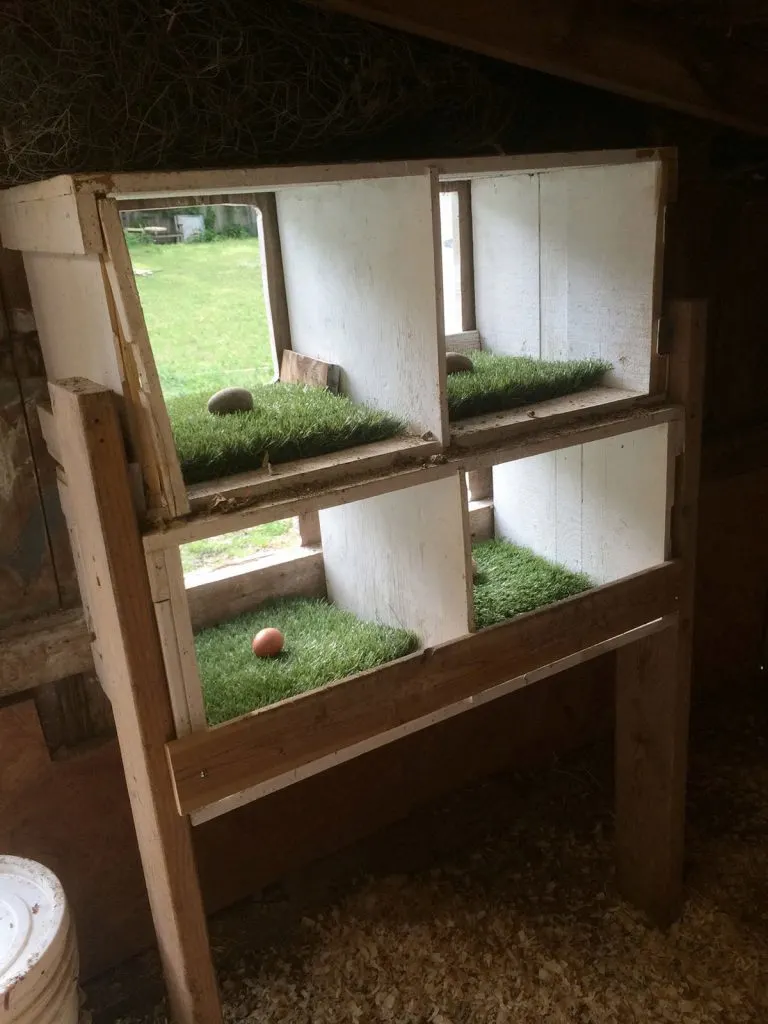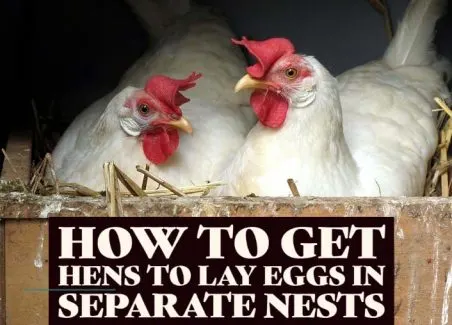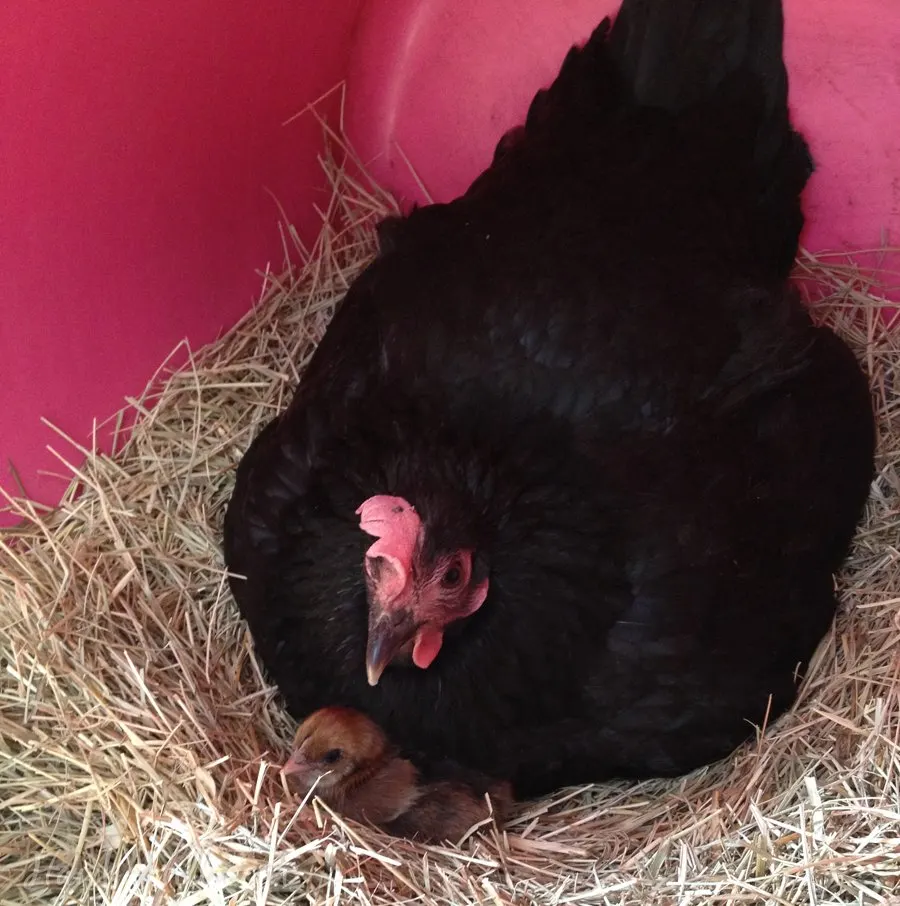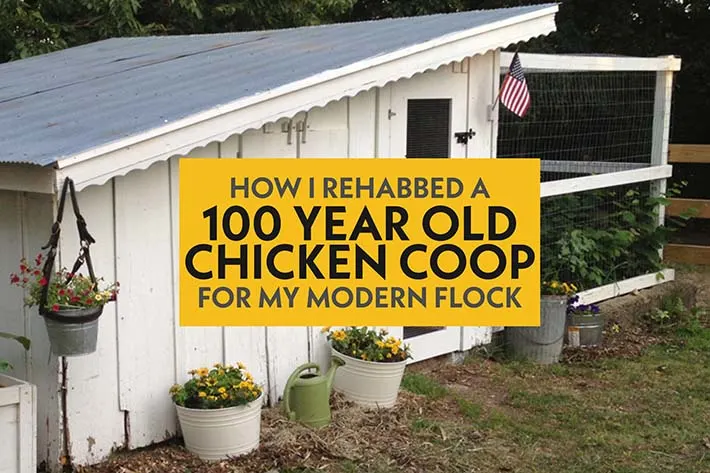I don’t know what fascinated me about raising chickens, but soon after moving into my first farmhouse- just two years after graduating from college- I built my first chicken coop.
Since that first coop, I’ve built two more, built a chicken tractor for meat birds, an above ground duck pond for my ducks, renovated a 100-year-old coop, and tried out a number of creative approaches to chicken keeping- including 2 original tutorials that are now “industry standard” for hobby backyard chicken keepers (Astroturf lined nesting boxes and Grazing Boxes.)
Below, you’ll find a rundown of all my chicken-keeping projects, plus some insight into my 12 years keeping chickens in a backyard flock. Navigate this comprehensive article with the directory below:
- Section 1: 🐔 Setting up your Creative Chicken Coop
- Section 1: 🐣🐥Creative Hints for Starting your Chicken Coop’s Flock
- Section 3: 🥚🍳 Increasing Egg Laying Production in your Hobby Flock
- Section 4: 🍗💰 What I Saved by Raising Organic Chickens for Meat
- Section 5: 🏰 Tour my Old Chicken Coop and Modern Upgrades
Creative Ideas for Setting up your Chicken Coop
Astroturf Lined Nesting Boxes for Easy Coop Cleaning
Recently, I visited friends outside of Seattle, Washington who had, a year earlier purchased chicks and were now the proud keepers of six laying hens. As they showed me through their handbuilt chicken coop, I was delighted to find that their nesting boxes were lined with durable, washable astroturf liners.
I was simultaneously both shocked and not surprised at all to see this. Why? Because I created and wrote about the idea back in 2013! A creative experiment that I tried on a whim and then blogged about has since made the rounds on chicken keeping forums and newsletters near and far. These days, you can even purchase precut turf nesting box liners instead of making your own as I described in that tutorial on how to line and nesting box with Astroturf for easy cleaning, durability, and fewer broken eggs.
Adding Reach Through Nesting Boxes
Although many modern, kit-style chicken coops come with reach through nesting boxes, if you’re building your own or updating an older, existing chicken coop, you may have an older chicken coop style that requires the egg collector to enter the chicken coop to collect eggs.
I’m convinced that this style of nesting boxes was popular 50-100 years ago because at that time children were generally tasked with collecting eggs daily! As I got tired of stooping to enter my chicken coop and collect chicken eggs daily, I “hatched” a plan to add reach through nesting boxes into a standard wall of an old chicken coop. Click the link above to read about how I added reach through nesting boxes to make egg collecting in my coop more convenient. By repurposing some almost-free wood shipping crates and DIY-ing a set of doors with some basic hardware skills, I created a handy set of doors connecting to comfortable nesting boxes for my hens.
Communal Nesting Boxes
One of the most interesting features of my first rudimentary coop was the communal nesting box. Commercial nesting box manufacturers have an interest in making sure we purchase individual nests for our chickens- but are they necessary?
Although I have created my own post on how to keep chickens laying in separate nests rather than all laying together in their one “favorite” nest, there are solid arguments for having a communal nesting box if the design can safely accommodate multiple chickens.
Although multiple chickens trying to share one average-sized nesting box can cause arguments between chickens, egg breakage, and even injuries, if the nesting boxes is large enough, then chickens can actually get along sharing a single long box Rather than shoving another hen out of the nest, in a shared nesting box there’s room for “everyone”. In a generously oversized nesting box, if a hen tries to sit in a spot that is already taken, the displaced chicken can simply slide over and both can fit.
In my first chicken coop (a makeshift chicken coop in a outdoor-facing horse stall) the chickens laid their eggs in a shallow and long enamel coated cast iron trough. Originally built into the side of the barn as a water trough for the cattle that had used the stall as a shelter, there was already a drop-down wood window behind the cast-iron fixture (originally built to allow a farmer to check water flow without having to enter the area where animals lived).
This drop-down window, in its new life, worked great as a reach through nesting box- and was much easier to use than the reach through nesting boxes I would install in my 100-year-old chicken coop after buying Hawk Hill a few years later.
One of the most interesting things about this cast iron trough was pointed out to me by a retired farmer who delivered hay one afternoon. Pointing and laughing at my trough-turned-nesting box, he pointed out that that cast-iron fixture which had functioned well as both an animal waterer and now, as a shared nesting box, was actually a creatively repurposed trough-style urinal from a mens’ restrooms of a stadium!
Download my Free Woodworking Plans for a Communal Style Chicken Coop Nesting Box
This free woodworking plan is delivered in the form of an SKP file format, which can be opened using the free web-based application SketchUp. With Sketchup, you can zoom, pivot, and explore every side of this 3D model- while viewing measurements, angles, and wood dimensions in depth.

Regardless of its modest beginnings, this long, slick trough with rounded, easy to clean edges and a slick enamel finish actually made an ideal shared nesting box. Chickens never could effectively argue in the “box,” because no one bird could get a solid footing to push another out-of-the-way. Each bird, sitting on a bit of hay to cushion between egg and trough, simply slid along the shared nesting box in the shallow, curved channels.
If you have laying hens that always want to share the same nesting box, it’s worth trying a communal nesting box. Be aware that to happily lay, chickens will still want to feel somewhat cozy and enclosed while laying. A shallow, trough style communal nesting box gives chickens the sensation of being surrounded and being safe. An overhead covering or overhang may help create a sense of safety that helps chickens adapt easily to laying in a shared nesting box.
Starting your Chicken Coop’s Flock
Hatching vs. Buying Chicks vs. Buying Adult Hens
When most chicken-keeping websites discuss starting a backyard flock of laying hens, it’s assumed that you’ll purchase chicks from a commercial hatchery. These chicks arrive in the mail- yes the mail– only a few days old, and are then raised to maturity inside a special habitat called a “brooder”. The brooder is maintained at a warm temperature by special lights, with specialty feeders and waters, in order to safely raise all (or, at least most) chicks to maturity.
But did you know there are other ways to start your flock? Some ways of starting your flock you might not have considered include:
Incubating your own eggs
Many people don’t realize that incubating and hatching your own eggs from fertilized chicken eggs is an easy and fun project. Hatching your own eggs can be a fun way to participate in the chicken lifecycle, and is especially fun for chicken-keeping with kids. The biology and science learning behind hatching eggs in a brooder is fascinating for kids and adults alike.
Pros of Incubating:
- ✔️ Young chicks are spared the potential trauma of shipping
- ✔️ It’s fun and educational to hatch your own eggs
- ✔️ You can get your chooks used to humans from day 1 of their life- resulting in friendly adult hens.
Cons of Incubating:
- ❌ An initial investment in an incubator plus brooding equipment is required
- ❌ It can be difficult to assess the sex of chicks without training, so you may devote resources to raising roosters.
- ❌ Both eggs and young chicks are fragile, and you can expect a portion of eggs to not hatch, and a ❌ small portion of hatched chicks to pass in the first week of life.
- Fertilized eggs may be harder to get, or harder to get in the breed you want. (Though they can often be acquired through a want ad on a local farm and garden group or website)
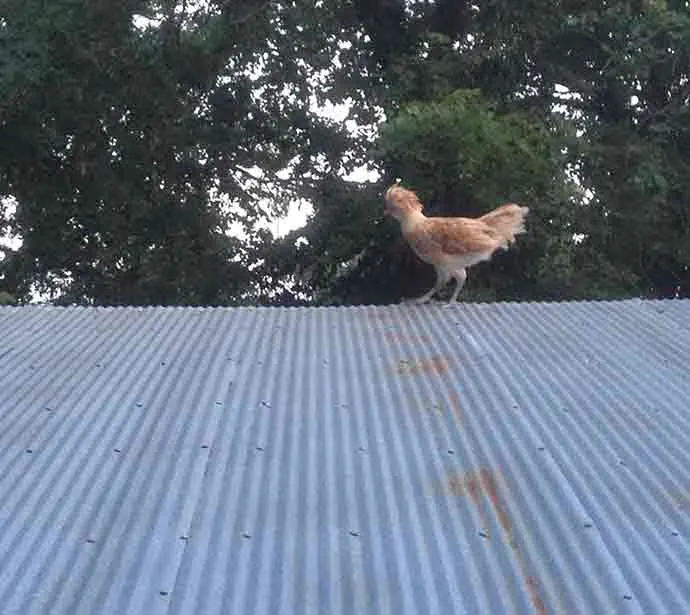
Purchasing Adult Laying Hens
Although my first batch of laying hens were chicks purchased from a hatchery (thankfully, I lived just up the road from Cackle, a major hatchery that allows local pickups) all of my new chickesn after that were acquired from a regional “small animal and poultry swap that took place at a farm store in a semi-rule area nearby on certain Sundays or came from fertilized eggs I allowed a broody hen to sit on, hatch, and raise.
While a poultry sale was an odd rural American experience, once the initial “weirdness” of buying what I jokingly referred to as “used hens” worse off, this became my standard for acquiring new laying hens. After all, why feed a young chick for months before getting eggs when I could acquire an adult hen who would usually begin laying within a week!
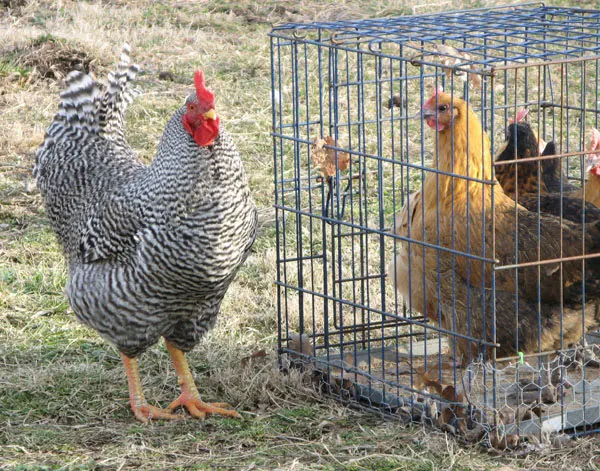
Pros of Buying Adult Hens:
- ✔️ There’s little to no waiting for eggs, adult hens often lay within a week of moving
- ✔️ No surprises in breed or gender, since you can see the adult
- ✔️ No brooder set up required.
Cons of Buying Adult Hens:
- ❌ These hens typically have not been handled and never become quite as friendly to humans as hand-raised chicks.
- ❌ Care must be taken in introducing new adult hens to an established flock, in order to prevent bullying and transmitting disease.
- ❌ Sometimes adult hens may have issues that prevent them from laying, like age or poor breeding, and you never really know until you have them in the coop. Follow my tips below for advice on avoiding this issue.
- ❌ The price is generally several times the cost of a chick, although it varies by breed and season. Generally, I am able to purchase an adult laying hen for $10-$15, with rare breeds selling for up to double that price.
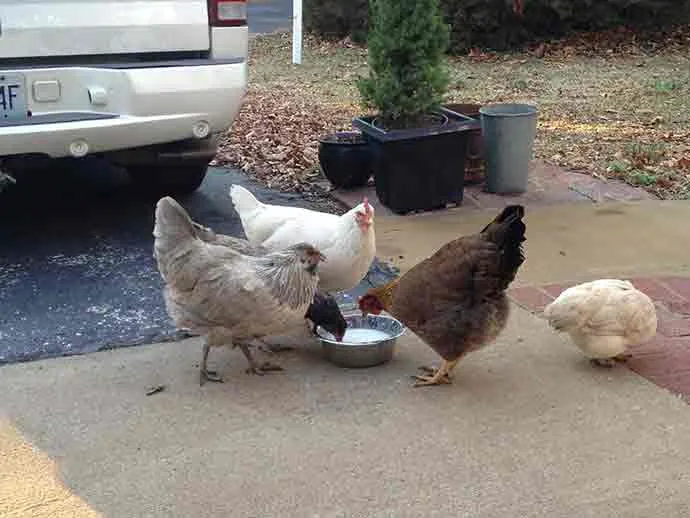
Tips for buying adult laying hens
These days, I get all of my laying hens as adults from a local poultry swap. It’s so much easier to introduce a new adult hen to my flock of than it is to wait six months for eggs!
In the unfortunate event that I lose a chicken to a predator or a hen doesn’t come home after a day of free-ranging (or, has tragically occurred twice in my 10 years of chicken keeping: a predator wiping out an entire flock) I can restore my weekly egg collection to pre-predator attack levels by purchasing adult hens ready to lay. The trick is knowing how to purchase hens that are young enough to lay and identifying problems as they occur. With that in mind, here are tips for purchasing adult laying hens:
If possible, buy hens that still look a bit like adolescents.
You may have to wait a few months for eggs, but not the full six months of waiting like when you purchase chicks from a hatchery.
When buying adult hens, build a flock of diverse chicken breeds.
By purchasing hens that each lay a different type of egg – such as white, brown, colored, and speckled eggs (like my favorite breed, Welsummer Chickens) you can know which egg belongs to which chicken, helping you identify immediately when your new hen starts laying– or doesn’t.
Know how to Recognize an old chicken
When evaluating a potential hand to purchase, know how to look for signs of age. Older chickens may have evidence of age showing in their fed and legs. While young birds have relatively smooth scales on their feet and legs, older hens have leather, bumpy legs. Many older hens have a pronounced spur on the back of their foot, and hens with this feature should not be purchased (although, this characteristic can vary by breed)
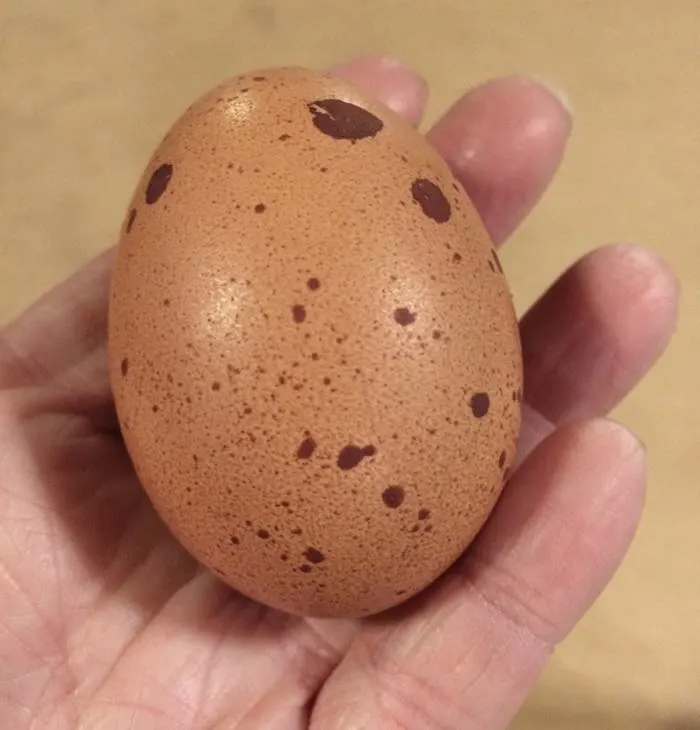
Since I outlined above the pros and cons of building a flock of laying hens through incubating your own eggs and through acquiring adult laying hens, it’s worth exploring the pros and cons of purchasing chicks from a hatchery. Each option for building a flock has its pros and cons, and neither is right for every chicken keeper.
Purchasing Chicks from a Hatchery:
Pros of Hatchery Chicks:
- ✔️ You’ll be able to buy the exact breed, sex, and number of chicks that you want.
- ✔️ Chicks arrive young enough that they are generally able to have early positive human handling experiences, resulting in friendlier adult laying hens.
- ✔️ Necessary vaccines may have been given by the hatchery, increasing flock health long-term.
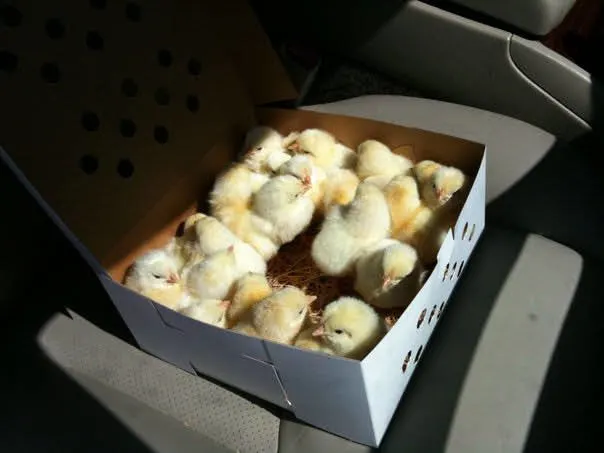
Cons of Hatchery Chicks:
- ❌ Hatchery chicks require that you purchase and set up a brooder with special equipment
- ❌ Young chicks are fragile, and it’s not unusual to have a small percentage of chicks die unexpectedly.
- ❌ Since most laying hens began laying eggs at around six months of age, six months of care and feeding is required before you’ll get eggs from your chickens. This may extend to a year if you don’t plan to winterize your chicken coop.
- ❌ The cost of hatchery chicks is generally quite a bit more than the cost of fertilized eggs, but much less than laying hens.
Increasing Egg Laying Production in your Hobby Flock
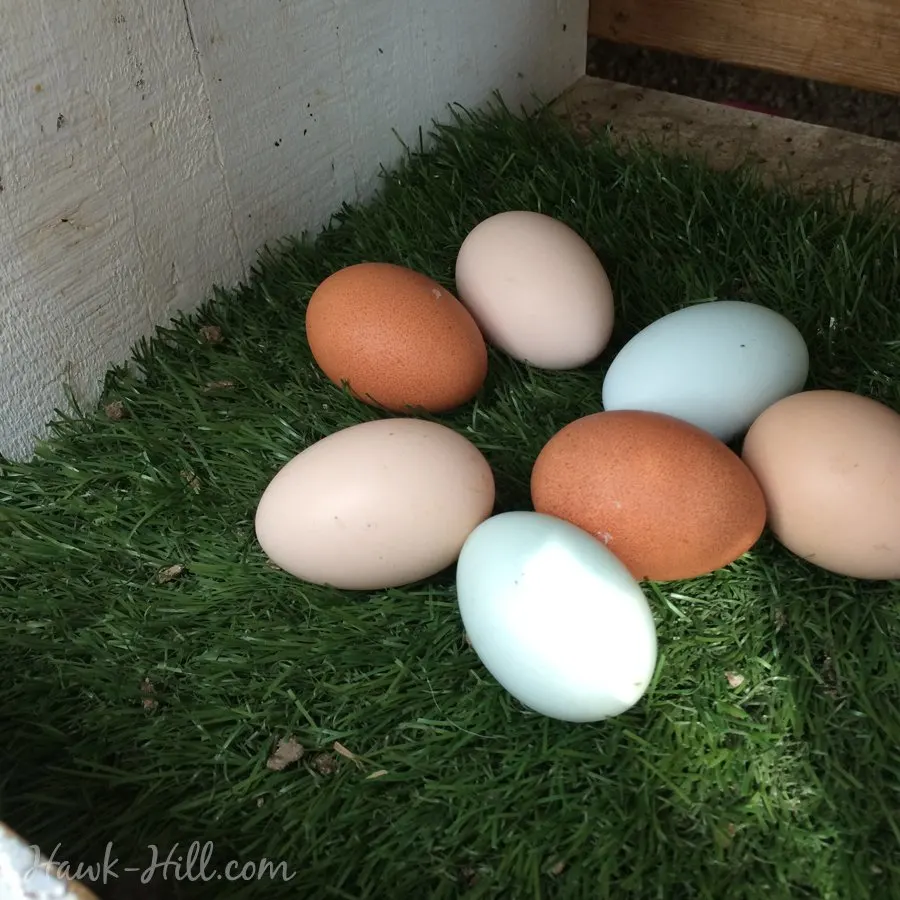
If you have spent much time on Hawk Hill, you know that I love creative chicken keeping. Whether it’s restoring my 100 year old coop, building a chicken tractor, or installing creative, innovative upgrades in my chicken coop, I’ve found my chicken- even the coop maintenance- to be a fun part of maintaining a hobby farm. Below are some of my top chicken keeping projects, including several projects that have even gone viral in recent years!
How to use Decoy Eggs to Increase Production
One of my most recent additions to my lineup of chicken keeping articles is my post on how to use decoy eggs to increase egg production. With just a small investment in some fake eggs- I recommend the wooden or ceramic kind- you can help train your hens to lay wherever you want.
Chickens naturally want to lay where other chickens have already laid an egg. In chicken thinking, this is a sign that the nest is safe from predators and that their egg might even hatch in the nest of another bird who is willing to sit on it (which most modern chickens are not willing to do!). By using fake eggs we can direct chickens to lay in areas that are less risky for egg breakage and easier to collect from. Click here for more information on this practice of using fake eggs in nesting boxes.
How to Winterize a Chicken Coop to get Eggs all Winter

Most chicken owners give up on eggs in the winter, but not me!
When days grow shorter and egg-laying more sporadic, many chicken owners settle in for a long winter of feeding the chickens with no eggs until spring. But it doesn’t have to be that way!
Based on my experience owning and showing horses- where we control when horses shed by bringing them into stalls and placing them under lights in the evening to artificially extend the amount of daylight their body is exposed to, which causes changes in their winter coats and shedding patterns- I’ve experimented with ways to get eggs from my chickens year-round.
In my post on how to winterize chicken coop to get eggs all winter, I outline all of the changes, both big and small, that I made to my chicken coop that resulted in me being able to collect fresh eggs all winter. While egg production still goes down a bit, most of my chickens lay consistently through the winter, which is a fun way to enjoy and appreciate my coop even when the Midwest winters are at their worst.
Most chicken coops are not wired for electricity, making lighting and the use of winter bucket heaters more difficult. If you’re managing a coop without electricity, learn how to make your own DIY bucket heater to keep chicken waters thawed all winter.
Raising Chickens for Meat
Cost breakdown of raising my own Cornish Cross chickens for Organic Chicken Meat

One of my hobby farm friends schemed a plot with me one year to raise chickens for meat. We had laying hens for several years and were curious about cutting the cost of purchasing organic chicken meat from the grocery store by raising our own birds. With a local Mennonite community offering an affordable butchering service, we decided to take the plunge.
Splitting 70 chicks between us, we each raised 35 Cornish Cross chickens and, six weeks later, had them butchered together. I wasn’t sure at the outset if our plan would actually result in savings over buying organic chicken from the grocery store, but after our chickens were butchered and chicken breasts, whole chickens, and even chicken feet (!) were overflowing my freezer, I sat down with my spreadsheet and all of my related expenses and did the math. Click here to find out more about my profit/loss margin on raising meat chickens.
Building a Collapsable Chicken Tractor for raising Meat Birds
The chickens I raised in my first experiment raising Cornish Cross chickens for meat couldn’t fit in my coop with my laying hen. My bossy and quite self-possessed laying hens would pulverize the young and not very agile meat chickens in a moment! To raise my meat birds, I had to create alternate housing for them: hence my post on building my DIY portable collapsable chicken tractor.
After convincing a broody hen to adopt my hatchery chicks and leaving her to her work in a quiet corner of the stable, I created a chicken tractor for them. My chicken tractor– which I’ve included plans for here- was my solution for housing these birds. My chicken tractor minimizes material cost while maximizing square footage, looks cute on my vintage farm, and collapses flat for easy transportation and storage off-season.
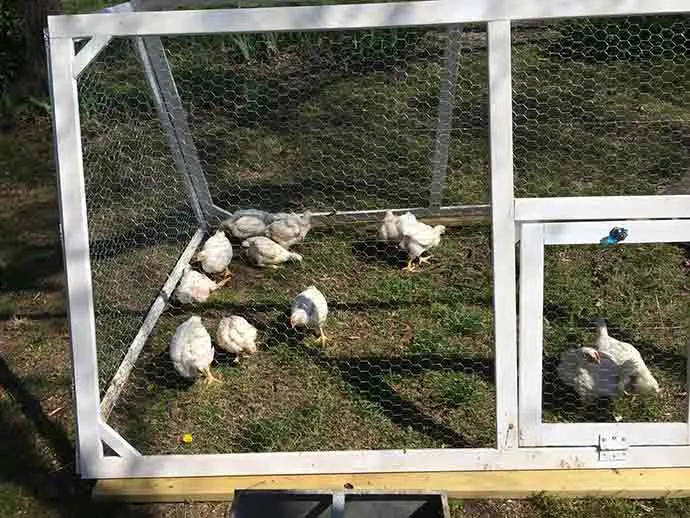
Harnessing the Power of Broody Hens
How to Convince a Broody Hen to Adopt Chicks
At one poultry sale I attended, I managed to talk myself into purchasing a banty hen. Banty chicken breeds are a bit smaller than average and have a reputation-well earned- for going broody. While in many laying hens, this tendency to go through the hormonal changes that make a hen want to sit on a nest and hatch egg- instead of actively laying eggs- is undesirable, Banty hens have come to be the adoptive mamas of many chicken coops.
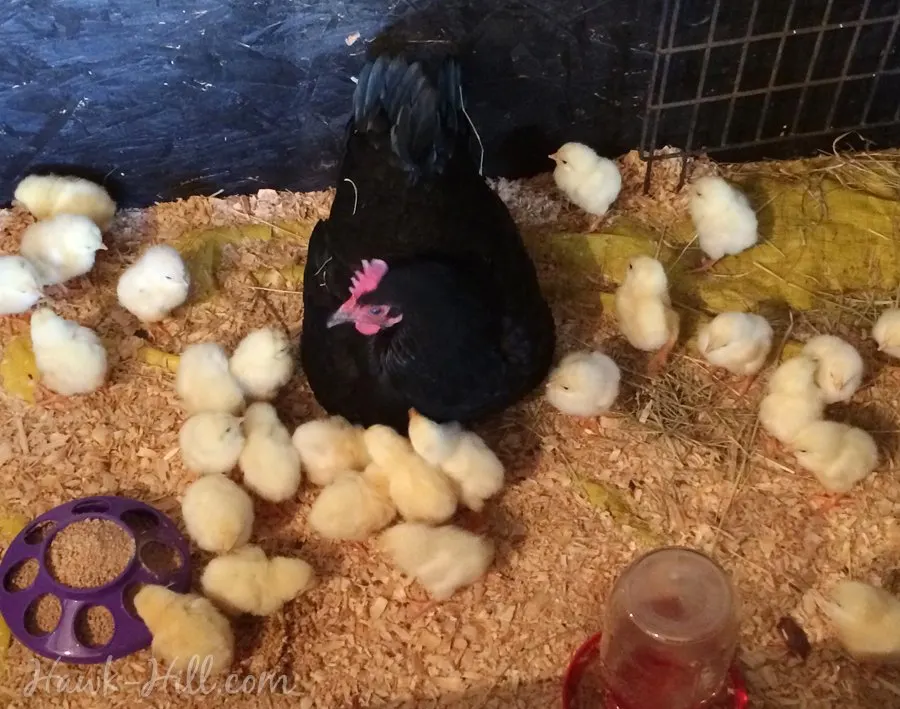
That particular broody hen- which never particularly warmed up to me- became the mama to many of my hatchery acquired chicks (and even brooded 35 meat birds once)! Hens that have gone broody are driven to hatch eggs and parent baby chicks, and since that first broody hen, I’ve had very good luck getting my broody hens to adopt several day-old chicks that I purchased from hatchery.
Using my tips to convince a broody hen to adopt chicks you can get almost any broody hen to bond with, protect, and warm young chicks- plus goslings, ducklings, and even baby guinea fowl!
How to Move a Broody Hen
Moving a broody hen is the trickiest part of getting her to either adopt hatchery chicks or allowing her to safely hatch fertilized eggs. Most nesting boxes are designed for human comfort- egg collection without too much bending over. This elevation, however, can be a dangerous place to raise baby chicks.
Although hens tend to go broody ain their standard nesting boxes, it’s often essential to move them before they can be given a fertilized egg to hatch or hatchery chicks to adopt. The problem is, some broody hens are very easy to “break. Any transition in their environment may trigger their brain to leave that hormonal stage that causes them to go broody. Successfully helping a broody check and adopt hatchery chicks or hatch fertilized eggs requires careful movement of the hen, which I have outlined step-by-step in my article on how to move a broody hen to a chick safe brooder.
Tour my Creatively Renovated Chicken Coop
100 year old Chicken Coop Tour
I love old houses, and I’ve always known that about myself, but I didn’t know how much I loved old chicken coops until I became the owner of one in 2010. When I purchased Hawk Hill- a 100-year-old farmhouse and acreage in Missouri- it came with a chicken coop dating back almost as old as the house- and maybe even older!
Although the chicken coop was very old, a metal roof kept in decent condition maintained the coop in mostly usable condition. With a few weekends of TLC to restore the hundred-year-old chicken coop, and a few more weekends to add modern upgrades like reach through nesting boxes, grazing boxes, and electrical upgrades that enabled the practices I use to keep my hens laying eggs all through a Midwest winter, my old chicken coop has become a modern coop with an old-fashioned appeal that brings a lot of charm to the property and fresh eggs to our plates!
Adding Chicken Grazing Boxes to my Chicken Run
One day as I was dumping a wheelbarrow of chicken litter to a compost pile in the small woods that form the hedgerow around Hawk Hill, I noticed, under some underbrush, a discarded metal grate. Through that grate, new growth of plants was growing up between the metal dividers, the young shoots protected from the munching of my pony that grazed in that area. In that moment, I was inspired. What if, I thought, I moved that grate to the run of my chicken coop and planted & grass inside of it?!
That moment of inspiration was the inspiration behind my tutorial on how to create chicken grazing boxes. Although in this tutorial I use a cheaper method than that initial steel grate I experimented with, the grazing boxes I created are an incredibly helpful way to make sure that my chickens have access to fresh greens even when they are cooped up. By planting cool weather grasses I can even provide sprouted greens and tender grass through all but the harshest weeks of winter in Missouri, which pairs well with my winter chicken keeping tips that keep eggs coming all year round.
Download Grazing Box Plans
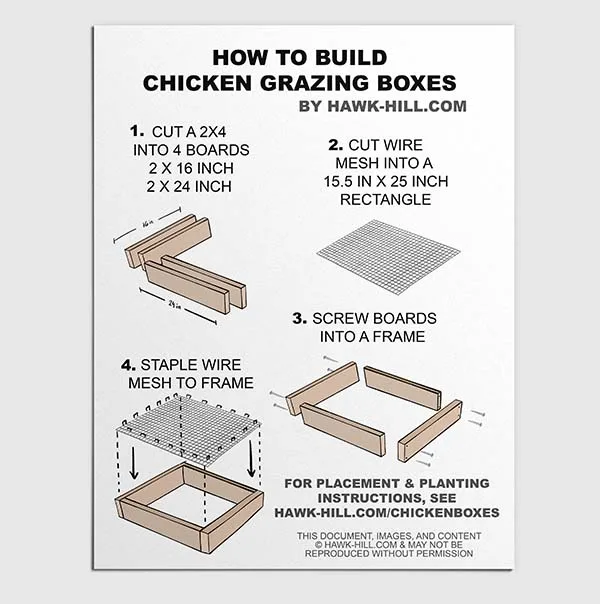
Christmas Decorating around My Chicken Coop
Although most of my tutorials on chicken keeping are practical – ways to increase egg production, minimize flock management hassles, and better manage a coop, a few years ago I put together a fun post on how I decorate my chicken coop for Christmas. Although I’ve posted a lot of resources on Equestrian inspired Christmas decorations, both indoor horse Christmas decorations and the exceptionally popular Evergreen Horse Wreath I created in 2013 and create posted a tutorial for, I haven’t shared much about my Christmas decorated coop before this.
It’s a small coop, so I don’t go overboard, but the planters (which I made from salvaged and repurposed wood crates) in front of my coop that grow chicken friendly plants all summer, are a fun place to place Evergreen boughs and small evergreens around Christmastime.
My first coop was extra simple- just a 16-foot fencing panel bent into an arc shape and dropped in an empty horse stall. With wire ties holding another panel to the front, I had my first chicken coop put together in a few hours. Although modest, it housed my first laying hens, my first pair of ducks, and even a flock of six guinea fowl I raised with the hopes of keeping the number of Lyme disease-bearing ticks on the property low.
Building a 2-week Chicken Feeder
One of the hardest parts about having a hobby farm is figuring out how to get away when it’s time for a vacation. We all need time off, but chickens- like other animals- need care 365 days a year. While a farm a sitter can be an excellent choice for caring for your flock while you are away, I tried to minimize care and requirements for the folks who care for my farm when I am away.
To help create a better solution for chicken feeding- one that wouldn’t require climbing into the heart of my chicken coop with a 40-pound sack of feed- I created a chicken feeder that lasts for two full weeks in my flock of 8 to 10 adult hens. Using just one feed pan, 25-gallon buckets, from small parts, and gravity, the hens become more self-sufficient and my costs for farm sitting while I am away decrease. Click here to read how to build your own version of this two-week chicken feeder.


